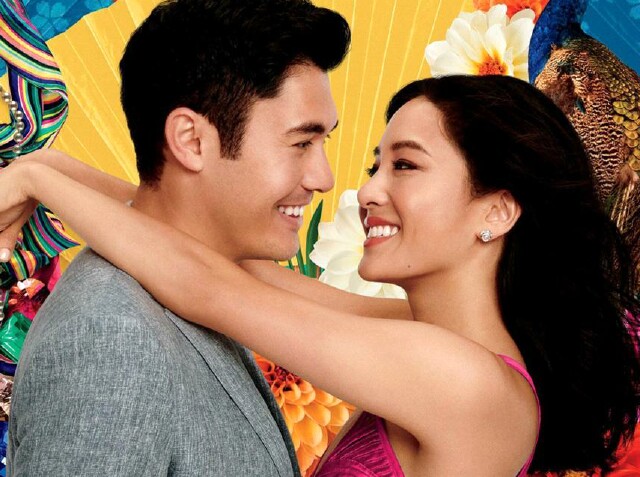Asian American Content Takes Center Stage

The No. 1 box-office hit Crazy Rich Asians is the latest proof of concept behind the call for more diverse stories in Hollywood. The film handily outperformed expectations and joins 2017’s critical and commercial hit Get Out and the history making Black Panther as films fronted by a non-white cast that delivered above and beyond at the box office. The success of Crazy Rich Asians is not an isolated event but rather an indication of the demand for rich and culturally relevant stories that focus on Asian communities. Crazy Rich Asians is a significant milestone, but it is one of many content offerings that provide an authentic Asian perspective and that appeal to mainstream audiences.
Asian Americans are one of the fastest growing demographic groups in the United States. They are socially and commercially vibrant with a remarkable 73% of all adult Asian Americans having been born outside the United States, which is almost double the number for Hispanics. As this segment grows in size, their influence on mainstream culture is even more profound.
Mindshare's 2018 Culture Vulture Trends Report asserts that the Asian demographic is growing in its cultural impact and relevance to mainstream media. “While Asian Americans have long established a foothold in digital media, there has a been a growing demand to see more and better representations in traditional mass media like movies and TV,” says Jodie Huang, Manager, Insights, Mindshare North America.” Indeed, 2018 has been a year of milestones for the Asian community. Sandra Oh has become the first actress of Asian descent to be nominated for an Emmyas Outstanding Lead Actress in a Drama Series for her role in BBC America’s Killing Eve. ABC’s comedy Fresh Off the Boatwill anchor the network’s upcoming TGIF Friday night lineup and will be the first network show with an all-Asian cast to enter syndication when it premieres on UPtvthis September.
An increase in the number of Asian cast members in mainstream shows is notable, but it is content that has a uniquely Asian voice that is moving the cultural dial. Authentic representation is a crucial component of effectively speaking to this group.
Crazy Rich Asians breaks out of traditional romantic comedy tropes by upending the mythology of who deserves to be a romantic lead. The movie immerses the viewer in the high-class society of Singapore, and what it lacks class analysis it more than makes up for in cultural perspective. The world presented is uniquely Asian in the use of visual iconography, reliance on family traditions and perhaps of most importance language. The characters speak in their native language at pivotal scenes in the movie and the soundtrack is stacked with Chinese versions of English-language favorites. Coldplay’s hit song Yellow is even used in the film to emotionally and symbolically reclaim an ugly racial slur. Reframing specific cultural touchpoints is a vital part of reinvigorating a film genre that has struggled to remain relevant in recent years.
The Netflix original movie To All the Boys I Loved Before finds new footing in the romantic teen-centered dramas first made popular by John Hughes in the ‘80s. The film is so self-aware of its common ground with its genre predecessors that it accurately trolls the infamous racist depiction of Long Duk Dong found in Hughes’ Sixteen Candles. To All the Boys pivots from the racist representations of the past and emphasizes a far more inclusive high school reality where LGBTQ students and other minorities are woven into the story. The current digital reality of text communication and viral videos are center stage and drive the narrative.
Far from the glamour and style of Crazy Rich Asians is the Canadian Broadcast Channel/Netflix series Kim’s Convenience. Set in a diverse middle-class neighborhood of Toronto, this series follows the daily life of the Kim family working and living in their corner store. Their multi-generational family is comedic in ways that challenge tired Asian stereotypes. The parents' accents are not a joke but rather an authentic expression of immigrant life. The brother/sister pair of Jung (Simu Liu) and Janet (Andrea Bang) are not “model minorities” but rather typical young adults struggling to find their place in the world while navigating family traditions. The Kim’s convenience store that is the primary setting of each episode is home to a rotating cast of characters that are equally diverse and representative of Toronto’s status as a global city.
The various shades and accents are all part of what makes Kim’s Convenience a standout for a growing audience. Korean food, familial titles (the Mother and Father are referred to in their Korean equivalent as Umma and Appa) and religion are front and center in a way that makes their display radical. Simply put we have never witnessed these lived experiences that are not mined for cheap jokes or painstakingly explained to the audience. The viewer is dropped into a well-developed world that is culturally unique and at the same time humanly familiar.
As stories featuring Asian Americans become more frequent, it will be increasingly important to ensure they authentically represent a complex global culture. What makes these stories succeed is their commitment to immersive world-building over shallow representation.
However, it shouldn't be implied that all this success has come without criticism. Critiques of the politics and optics of both Crazy Rich Asiansand To All the Boys came from within the Asian American community. The exclusion of “darker” Asians in favor of centering East Asian visuals is an important conversation that begins to interrogate both intergroup politics and class. Having achievements that are still notable for being “first” within mainstream media adds pressure to creators to craft stories that account for everyone’s perspective. The heavy burden of expectations will likely fuel more conversations as projects focused on the Asian American experience are brought to market.
Critiques of failed inclusion can be in part satisfied by broadening the scope of projects that are approved. Commercial success has proven (yet again) that audiences are hungry to see themselves and their values reflected in their media choices.
“As more content featuring Asian Americans comes out, it will begin to help normalize their presence as equals in the U.S." says Mindshare's Huang. "The growth of content will also help create new role models and influencers, opening up avenues to new ideas and platforms unique to this community.”
Click the social buttons above or below to share this content with your friends and colleagues.
The opinions and points of view expressed in this content are exclusively the views of the author and/or subject(s) and do not necessarily represent the views of MediaVillage.com/MyersBizNet, Inc. management or associated writers.


